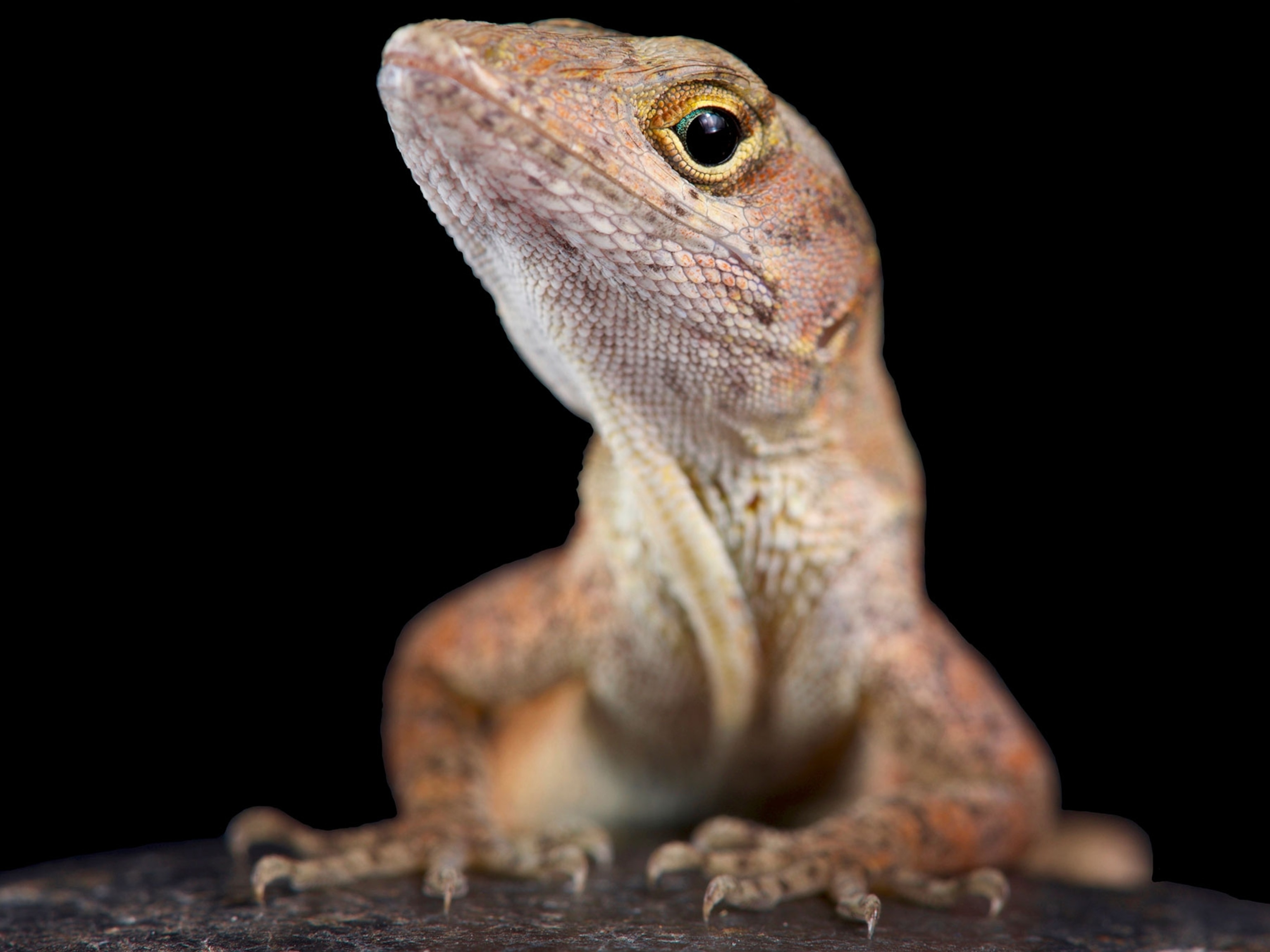
New Species: Bumblebee Gecko Strikingly Striped
The latest buzz in reptiledom—a strikingly striped lizard—comes from a little-explored Pacific island.
The latest buzz in the reptile world is a new "bumblebee" gecko species discovered in Papua New Guinea.
Dubbed Nactus kunan—kunan meaning "bumblebee" in the local Nali language—the black-and-gold striped animal belongs to a genus of slender-toed geckos, a new study says.
That means "these guys don't have the padded, wall-climbing toes like the common house gecko or the day gecko in the car-insurance commercials," study co-author Robert Fisher, a biologist at the U.S. Geological Survey Western Ecological Research Center in San Diego, said in a statement.
In 2010 Fisher was searching for invasive brown tree snakes on Manus Island (map) when locals brought him two specimens of the odd-colored animal, which appears to live nowhere else.
It's unknown how many of the roughly 5-inch-long (13-centimeter-long) geckos exist, or if the species is threatened, according to the study.
New Gecko Has Rare Coloration
The evolutionary impetus for the bumblebee gecko's colors is unknown, though the banded pattern likely helps the lizard hide on the rain forest floor.
Only one other species in the Nactus genus sports colors other than dull brown: Nactus galgajuga, a "striking" black-and-white striped species that lives in northern Queensland, Australia, said study co-author George Zug of the National Museum of Natural History in Washington, D.C.
In fact, genetic research revealed that N. galgajuga's closest relative is the bumblebee gecko, said Zug, whose study was published April 4 in the journal Zootaxa.
Zug and colleagues expect that more new gecko species will be discovered on Manus Island, which few scientists have explored.
La Sierra University herpetologist L. Lee Grismer, who wasn't involved in the study, said via email, "What's really amazing is that the [locals] knew ... all the time being that the specimens were found in their houses.
"It just goes to show that we cannot stop looking anywhere and everywhere."





